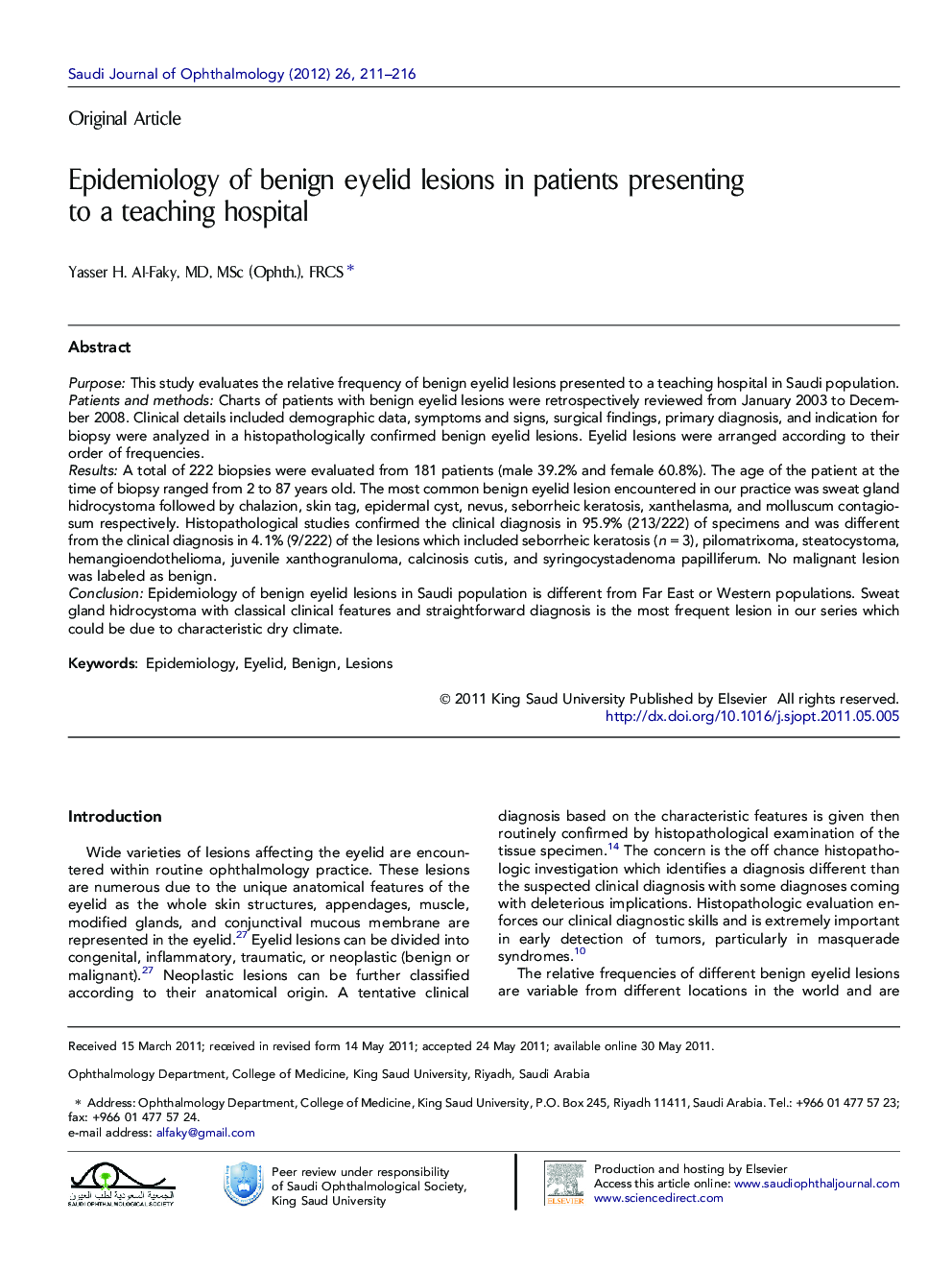| Article ID | Journal | Published Year | Pages | File Type |
|---|---|---|---|---|
| 2700381 | Saudi Journal of Ophthalmology | 2012 | 6 Pages |
PurposeThis study evaluates the relative frequency of benign eyelid lesions presented to a teaching hospital in Saudi population.Patients and methodsCharts of patients with benign eyelid lesions were retrospectively reviewed from January 2003 to December 2008. Clinical details included demographic data, symptoms and signs, surgical findings, primary diagnosis, and indication for biopsy were analyzed in a histopathologically confirmed benign eyelid lesions. Eyelid lesions were arranged according to their order of frequencies.ResultsA total of 222 biopsies were evaluated from 181 patients (male 39.2% and female 60.8%). The age of the patient at the time of biopsy ranged from 2 to 87 years old. The most common benign eyelid lesion encountered in our practice was sweat gland hidrocystoma followed by chalazion, skin tag, epidermal cyst, nevus, seborrheic keratosis, xanthelasma, and molluscum contagiosum respectively. Histopathological studies confirmed the clinical diagnosis in 95.9% (213/222) of specimens and was different from the clinical diagnosis in 4.1% (9/222) of the lesions which included seborrheic keratosis (n = 3), pilomatrixoma, steatocystoma, hemangioendothelioma, juvenile xanthogranuloma, calcinosis cutis, and syringocystadenoma papilliferum. No malignant lesion was labeled as benign.ConclusionEpidemiology of benign eyelid lesions in Saudi population is different from Far East or Western populations. Sweat gland hidrocystoma with classical clinical features and straightforward diagnosis is the most frequent lesion in our series which could be due to characteristic dry climate.
